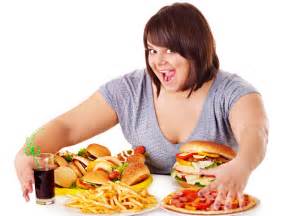-
Type 2 Diabetes and
Neuropathy
Diet and Exercise.
Type 2 Diabetes can be reversed with diet
and exercise, which supports the halt of neuropathy
and the avoidance of
amputation.
Facts:
1) In 2016 the World
Health Organization (WHO) announced that worldwide, 1
in 11 adults have diabetes, and 1 in 3 people are
overweight - 246 million diabetics. Today the numbers
are even higher.
2) More than 29.1 million
Americans have diabetes, many have resulting
neuropathy.
3) Every 10 seconds, 2 people develop
diabetes.
4) Approximately 10% of all diabetes cases
are Type 1, the rest are Type 2.
Diabetes
triples the risk of a heart attack and
leaves people 20
times more likely to have a leg
amputated, as well as increasing the risk of
stroke, kidney failure, blindness and
complications in pregnancy. These facts are
just horrific
when we consider this is, in many cases
completely preventable, let alone
reversible.
Amputation?
Diabetes creates neuropathy which is a
condition that affects the nerves causing
pain. Many diabetics develop neuropathy in
their legs and it can become so bad, that
feeling can be lost altogether, which can
shockingly lead to amputation which could be
prevented!

Neuropathy causes intense tingling
and burning,
often resulting in complete loss of
feeling.

Why is this happening?
Being overweight is strongly linked to Type 2 Diabetes which
commonly occurs due to an unhealthy diet packed with
sugar, coupled with minimal
inactivity, basically resulting in excessive
acidic toxin accumulation and depleted oxygen,
creating negative long term health consequences.
"People with a lot of visceral fat, also known
as central obesity, belly fat, or abdominal
obesity, are especially at risk. Being
overweight or obese causes the body to release
chemicals that can destabilize the body's
cardiovascular and metabolic systems." - medicalnewstoday.com/info/diabetes
Not all Type 2 Diabetes cases are overweight
(some are slim), and the medical world indicates
certain races are more prone such as Black
Women, Hispanic, Asian American and American
Indian. People with high blood pressure and men
with low testosterone are also at risk.
FYI:
1) Drinking just one can of regular soda
per day can raise the risk of developing Type 2 Diabetes by 22%, as
reported by researchers from Imperial College
London in the journal Diabetologia.
2) Nearly 40 drugs are known to cause
neuropathy. Excess alcohol can cause neuropathy.
It is estimated that upwards of 20 million
Americans have peripheral neuropathy, and the
most common cause is diabetes.

We
are what we eat.
Shift your mindset, give up your love affair
with food, get your body moving. Instead of
living to eat, eat to live.
- Ask yourself what don't you want to feel.
- Is the comfort of food more important than
your health?
Type 2 Diabetes can
be
reversed naturally.
The solution is to primarily, dramatically
overhaul your diet, and get your body
moving every single day.
What do you have to lose by trying? By doing
nothing you risk losing mobility.
Diet
change.
For some Type 2
diabetics that have changed their diet, they have
succeeded in the elimination of diabetes,
not to mention excess weight and stress.
Eat raw,
organic wholefoods that are alkaline, and try
juicing which is fantastic because you get
concentrated nutrition, coupled with daily
aerobic exercise, thereby promoting
a healthy body without pain or disease.
Reverse diabetes in 30 days by eating
a raw food diet:
This may prove to be too
difficult for anyone that cannot
discipline themself and commit.
- No meat,
dairy, alcohol, sodas, caffeine, refined
foods, junk food or fast food.
- Avoid potatoes,
bread, pasta and rice which are
carbs, which the body breaks down
into sugar.
NO SUGAR!
Documentary:
Watch the trailer
of this incredible raw food documentary
and see how six people reversed their
Type 2 Diabetes in 30 days ...
- www.youtube.com/watch?v=YSUw9SaPLmA
Doing
nothing at all risks possible leg
amputation, feet amputation, a heart
attack, kidney failure, blindness or a
stoke, and a lifetime of drugs.
Consult with your qualified health
practitioner and a nutritionist for
guidance.
|



